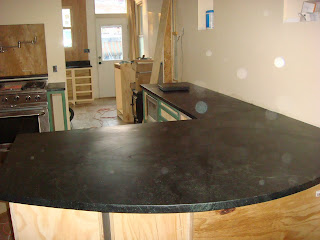Kitchen.com has a great article on how to estimate your kitchen remodel's return on your investment.
The recession may technically be over, but when it comes to housing values, the numbers still have been sliding down. As a result, so has the return in investment on remodeling projects. However, a kitchen remodel continues to be the interior home improvement project that increases your home's value the most. According to the 2010-11 Cost vs. Value Report*, a minor kitchen remodel ties for the number 4 spot on the top 10 list of home improvment projects in terms of return on investment. Most of the remaining projects in the list are exterior replacements like an entry door or garage door, which tend to be less expensive projects than kitchens and also fall into the "must-do" rather than "nice-to-do" category.
The numbers reported below are national averages; in general, the Pacific states region outperformed the rest of the nation despite slightly higher costs. For example, on the West Coast, a minor kitchen remodel averages a cost of $23,603, with a return of 84.1 percent. In the East North Central (Great Lakes) region, however, the same project costs $22,239, with a return of just 63.7 perecent.
Minor Kitchen Remodel, Mid-RangeThe 2010-11 report puts the national average price of a mid-range minor kitchen remodel at
$21,695, averaging a return of
72.8 percent (down several point's from last year’s 78.3 percent) a year later. What is a minor kitchen remodel? According to
Remodeling, it’s a 200-square-foot kitchen with 30 linear feet of cabinetry and countertops. The cabinets get refaced with new raised-panel wood doors, drawers and hardware, but the boxes stay. Laminate countertops and vinyl flooring are removed and replaced with the same material, but in updated colors and patterns. You also get a new, energy-efficient wall oven and cooktop, a new mid-priced sink and faucet, wall covering, and a new paint job on your trim.
Major Kitchen Remodel, Mid-RangeA major kitchen remodel at a mid-range price will run an average of
$58,367, according to the report. A year later, you can expect to recoup
68.7 percent (down from 72.1 percent) of that. This 200-square-foot kitchen features a 3-by-5-foot island, 30 linear feet of semi-custom wood cabinets, laminate countertops, and a double-bowl stainless-steel sink with single-lever faucet. Add new energy-efficient appliances: wall oven, cooktop, ventilation system, built-in microwave, dishwasher, garbage disposal, and custom lighting. Finish up with new vinyl flooring and paint for the walls, trim and ceiling.
Major Kitchen Remodel, UpscalePrice tag:
$113,464, according to the report, with an ROI of
59.7 percent (down from 63.2 percent). It's an easy bill to run up in a 200-square-foot kitchen with 30 linear feet of custom cherry cabinets with interior accessories, natural stone countertops, and an imported ceramic or glass tile backsplash. Appliances include a built-in refrigerator, cooktop, 36-inch commercial-grade range and vent hood, built-in warming drawer, trash compactor and built-in microwave/convection oven. Then add a high-end undermount sink; designer faucets; built-in water filtration system; general, task and under-cabinet lighting; cork flooring; and cherry trim.
*The 2010-11 Cost vs. Value Report—a joint study done by the National Association of Realtors and Remodeling magazine—provides national and regional averages. The report estimates the cost of an average home improvement project and compares it to the value it would recoup if the home sold a year later. In 2010, more than 3,000 real-estate agents, brokers and appraisers in 80 cities provided ROI estimates.


































